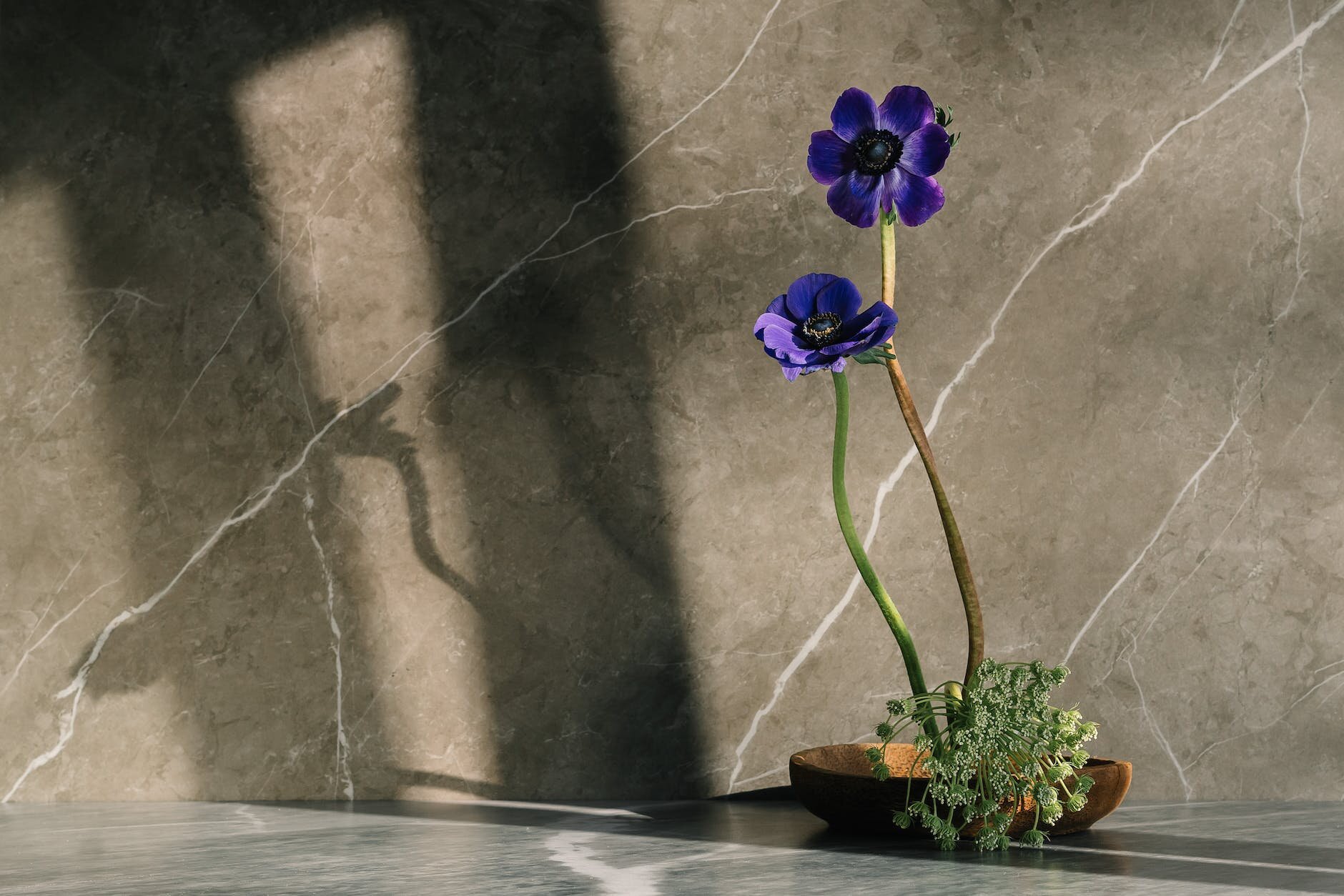In Japan, there is a simple art form that can bring great peace and ease to the mind and body. Ikebana, the Japanese tradition of flower arrangement, dates back to the 7th Century. The “Way of Flowers” is a refined, delicate practice that uses nature to create sculptural art of zen simplicity. They are well-known for their minimal clean lines and shapes. Also, Ikebana is a way to express emotions by using leaves, blossoms, branches, and leaves. Ikebana benefits are extensive, and it is an excellent way to practice mindfulness.
Now, let’s discover the mindful benefits of Ikebana and Japanese flower arranging and learn how to bring creative Zen and peaceful flowers into your life.
Ikebana Benefits: Mind and Soul
Ikebana, or Japanese flowering arranging, is a zen art form that comes with many benefits for the mind a soul; some of the ikebana benefits are:
- Foster a meditative mind
- Relieves anxiety, stress and depression
- Forms a connection to nature
- Enhances gratitude for the things around us
- Encourages acceptance of imperfection

7 Principles of Ikebana
Ikebana is not simply arranging peaceful flowers into pretty displays. This art form was developed within zen philosophy. Here are the 7 principles of ikebana:
- Silence – It is an art form that is associated with meditation and ceremonies.
- Minimalism – This is where the Buddhist influence comes into play.
- Line and shape – simple, natural, and graceful.
- Form – is found in nature and not planned.
- Emotions- Let your emotions guide you in your decisions. Let flowers speak what cannot be said.
- Reflection of the seasonal changes
- Structure – This triangle is delineated by three points representing heaven, earth and humanity.
Ikebana’s primary rule of discipline is to arrange in silence. This allows one to be present and mindful and observe the flowers with your senses: touch, smell, sound, and look. Additionally, Ikebana is a meditative practice that encourages mindful living and practice.
See also: What is Japanese Forest Bathing?
No matter its imperfections or uniqueness, every flower is accepted as an individual characteristic that positively contributes to the overall styling aesthetics. This gesture is meant to teach us how to accept and beautify differences between people. Respecting and empathizing with each flower is believed to foster a sense of coexistence in the world.
Furthermore, Ikebana uses the act of arrangement to guide us through the philosophies and deep explorations inwards. We can achieve tranquillity and gratitude by focusing on scent, physical connection, harmony, and impermanence.
Also, according to legend, all the most famous Japanese generals were masters of this art. They found it helped them relax and clarified their actions in the field.
How to start a mindful flower arranging practice
- To begin your practice, find a calm place to put your materials.
- Be present and mindful, practice breathing, and focus on the now. Once you are in a mediation state, any thoughts that come, acknowledge and let them pass.
- Begin with a shallow pot or vase. Next, add a kenzen to support the stems.
- To create depth in a small space, arrange flowers in odd numbers and the order of their height.
- The tallest stem is the primary stem. Also, the secondary stem should be three-quarters the height of that first stem and half the size of the final stem.
- You can play with it until you find the right balance, and it feels good. Finally, follow your instincts.
Lastly, most arrangements are asymmetrical. The narrower side is called “yang”, and the wider side is “yin”. Furthermore, this distinction means that the larger leaf side must face the front, and the smaller side must face the back.

Peaceful flowers by the Season
Here are some flowers and fauna you can use for your Ikebana throughout the year:
- Spring: Crocus
- Summer: Iris
- Autumn: Chrysanthemum
- Winter: Plum blossom
Final thoughts
Finally, as we can see, Ikebana benefits are great and help promote a mindful way of living in the present. Ikebana allows us to enter a meditative state in silence. Additionally, It helps us be creative, tune in to our emotions and accept imperfections. Ikebana also allows us to form strong connections to nature and the changing seasons.
Give it a go today and experience the ikebana benefits yourself.


